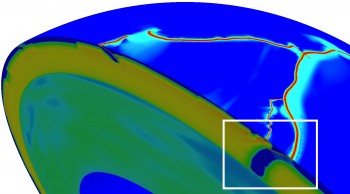The Bell Prize: Unlocking the Secrets of the Earth’s Crust
November 25, 2015

We’re on the cusp of a new era for science and computer science. People are able to measure natural phenomena more precisely thanks to all the new sensors and the Internet of Things. We can handle immense amounts of data thanks to new data management technologies. And we’re producing ever more sophisticated algorithms and computer simulations. Wrap it all together and it means we are on the path to understanding nature more deeply than was ever possible before.
A group of scientists from the University of Texas at Austin, IBM Research, New York University and the California Institute of Technology that I’m a part of pushed the needle of progress forward with our realistic simulations of the dynamics of the earth’s mantle and crust. For our work, we just yesterday received the Gordon Bell Prize, one of the top honors in the computer science field.
The group—spearheaded by Omar Ghattas of the University of Texas—created a technology tool that geologists and seismologists can use to improve their understanding of the forces that are behind the origin of earthquakes and volcanoes.
IBM, Nov.20, 2015
Featuring: Omar Ghattas, professor and John A. and Katherine G. Jackson Chair in Computational Geosciences, Department of Geological Sciences, Jackson School of Geosciences; director,Center for Computational Geosciences and Optimization, Institute for Computational Engineering and Sciences; research professor, Institute for Geophysics, Jackson School of Geosciences; professor, Department of Mechanical Engineering, Cockrell School of Engineering
